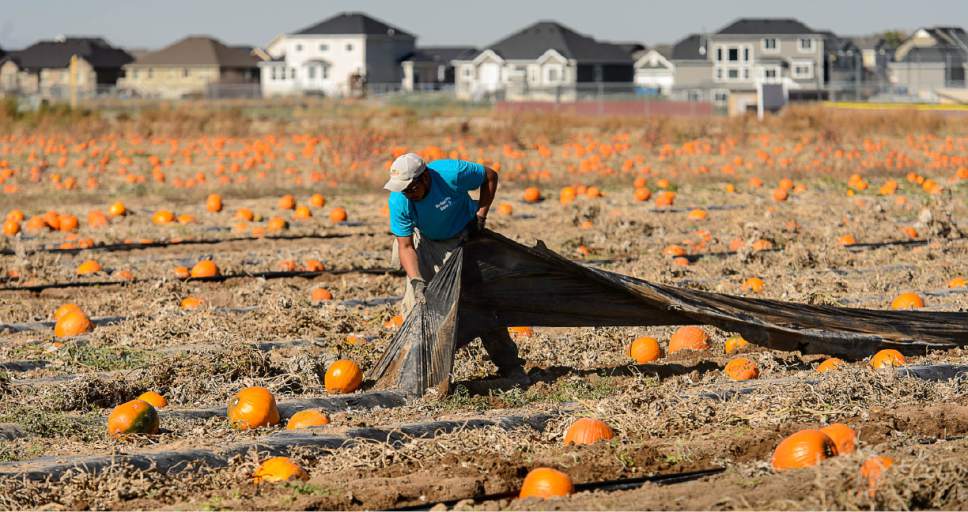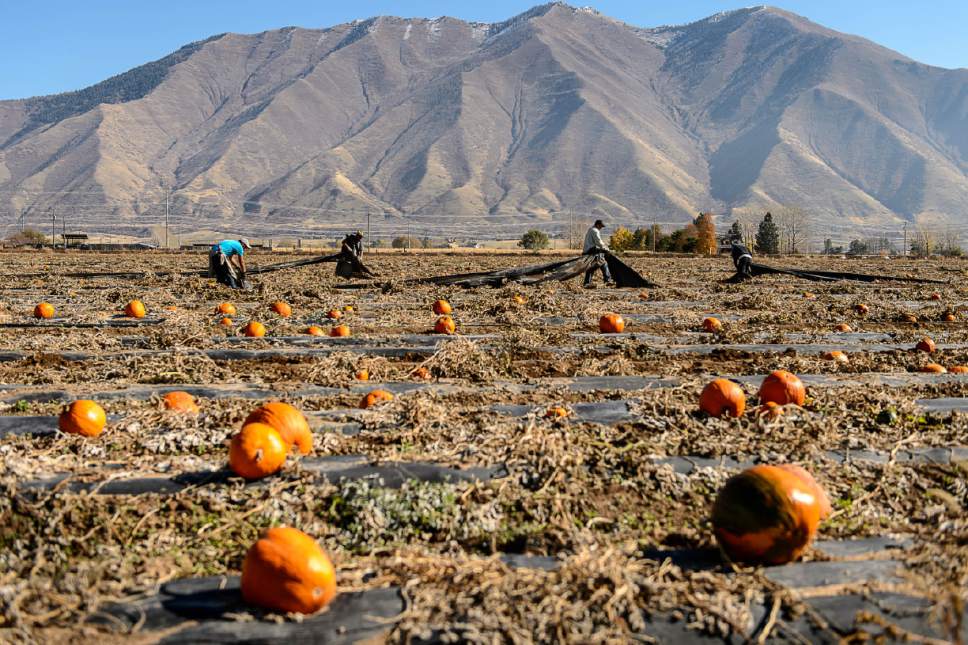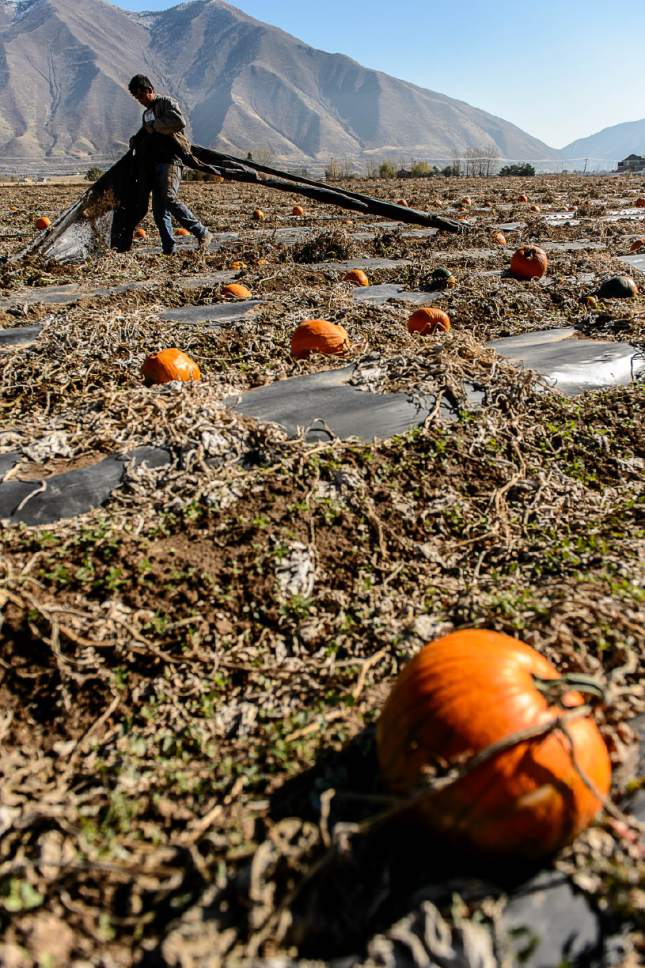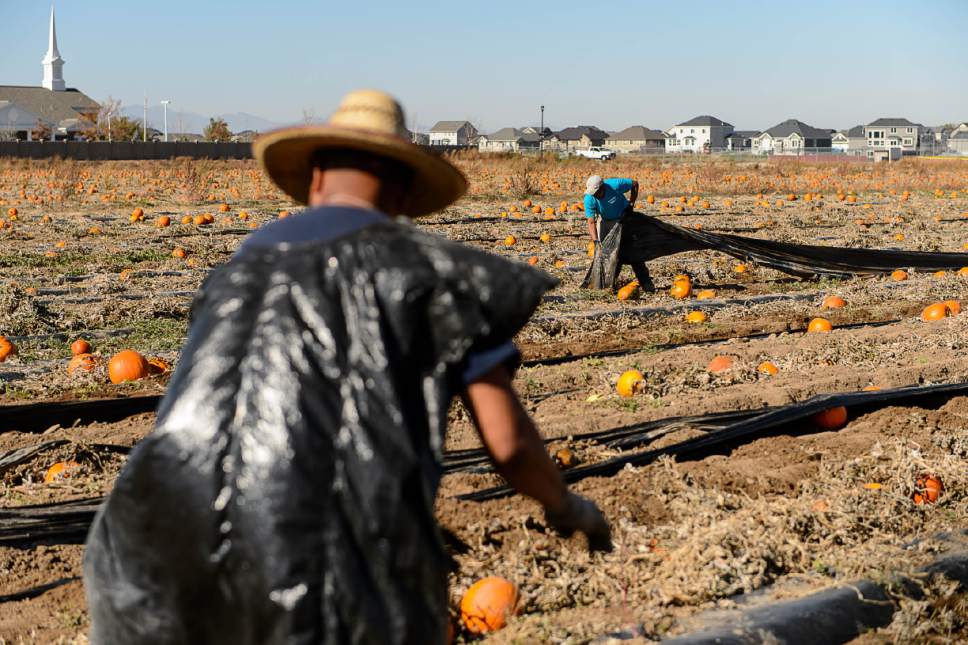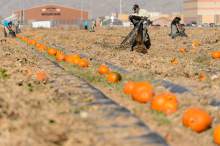This is an archived article that was published on sltrib.com in 2016, and information in the article may be outdated. It is provided only for personal research purposes and may not be reprinted.
Springville farmer Jake Harward uses legal immigrants for jobs that locals don't want. He says it was so tough to find enough help this year that "we weren't able to harvest some of our watermelons."
Also, federal red tape delayed by 45 days the visas he sought for foreign workers for spring planting. "That put us behind. We were scrambling. It was really stressful."
Officials say such often-unmet high demand for lower-pay jobs in Utah explains why the state now ranks No. 10 nationally for the share of its workforce that is filled by unauthorized immigrants: 5.4 percent, about one of every 20 workers here in 2014.
That's according to a report released Thursday by the Pew Research Center, based on Census and other government data.
The study says that undocumented rate is much higher in some industries than others. The highest such rates in Utah industries are:
• One of every five agricultural workers.
• One of every seven construction workers.
• One of every nine employees in the hospitality industry.
The study also says Utah is just one of seven states where the size of the unauthorized immigrant workforce has increased compared to the start of the Great Recession in 2007.
"Why this is happening is: economic opportunity," says Mark Knold, senior economist at the Utah Department of Workforce Services.
He adds that undocumented workers are coming "because the local population doesn't want to fill these [lower-paying] jobs to the fullest, and therefore this is an open door for them."
For example, Harward says he must prove every year that he can't find enough local workers before he is allowed to apply for H-2A visas to bring in foreign workers. "We advertise in Utah and four surrounding states," he said. "We get maybe two applications for the 25 positions we are trying to fill."
He adds, "To say we're taking jobs from Americans just isn't true."
With such unmet demand in Utah, Knold says, undocumented immigrants "are coming here not because the weather is nice or the scenery is beautiful, they're coming here because they think there is a better economic opportunity here than where they lived."
He adds that has been happening for a long time. When he started working for the state 27 years ago, among his first assignments was to help attract enough legal-immigrant help for agricultural work.
"This is something that has been long term and has been a real change in the economy," Knold says.
Randy Parker, CEO of the Utah Farm Bureau Federation, says he believes many agricultural workers enter the country legally through temporary programs but overstay their visas because demand for work is high, "and many wonder if they could ever get back here and would be able to provide for their families."
He says most farmers and ranchers try to use legal help, but may be presented with documentation that is false and difficult to verify. Also, at harvest time, when extra crews come in, farmers often rely on recruiters of those teams to verify citizenship of workers.
The farm bureau has pushed hard for immigration reform, especially to allow bringing in more workers legally or for longer terms. Parker said current programs fall short, especially for operations such as dairy farms, that need help continually and not just seasonally.
So would Utah's agriculture, construction and hospitality industries be in trouble without the high number of undocumented workers?
"They could be," Knold said. "Obviously, you have to have labor to make things go. They [undocumented workers] help supply the labor that local populations themselves don't want to step into."
An example, he said, was when Utah's construction industry started to recover after about five years of stagnation that started with the Great Recession.
"Right out of the gate, they were talking about labor shortages," he said. "The construction workers who lost their jobs at the start of the Great Recession didn't sit at home five years waiting for construction to come back. They went off and did something else" — and immigrants filled much of the void when construction recovered.
Knold isn't surprised that Utah now ranks No. 10 for the share of its workforce filled by the undocumented. He said most states that rank high are in the Southwest, and not far from Mexico, the supplier of most of these workers.
He said the undocumented "are coming into areas where the culture and climate is very much the same as where they come from, in contrast to something like Maine or Michigan."
The Pew report estimates that 75,000 of Utah's 1.44 million workers are undocumented. Also, it estimates that 100,000 of the state's 3 million residents are undocumented.
While the number of undocumented workers in Utah has increased since the recession, the study found, that is not true for the nation as a whole.
The Pew report said 8 million unauthorized immigrants were working or looking for work in the United States in 2014, making up 5 percent of the civilian workforce. The number was unchanged, but the share was down slightly, since 2009 when the Great Recession officially ended. —
States with highest share of unauthorized immigrant workers
1. Nevada, 10.4%
2. California, 9.0%
3. Texas, 8.5%
4. New Jersey, 7.9%
5. Arizona, 6.6%
6. Florida, 6.2%
7. New York, 5.9%
8. Maryland, 5.9%
9. New Mexico, 5.6%
10. Utah, 5.4%
Source: Pew Research Center


